Virtually from the moment he defeated Michael Dukakis in the election of 1988, George Herbert Walker Bush made it clear that he was going to be a very different sort of Commander in Chief than Ronald Reagan. He told the Secret Service to turn off its sirens and ordered his motorcade to come to a halt at stoplights. He let it slip that he (sometimes) showered with his dog. He took pictures of his aides when they fell asleep during meetings. He went jogging in the mornings, repaired to a newly built horseshoe pit for a little “prudent R and R” in the afternoons, and liked to zip out to suburban Virginia for Chinese food, sweeping up family, aides and occasionally even perfect strangers in the adventure.
He wrote thank-you notes by the dozen, as if he were winning over the country one correspondence card at a time. Just before Christmas one year, he went bonefishing in the Florida Keys. But he stayed in Washington for the holiday itself so that his bodyguards could spend the day with their families. He treated his traveling press photographers to regular weenie roasts. He dragged Cabinet members up to Camp David for the weekend, whether they wanted to go or not. Asked in the final days of his transition what surprised him most about the spacious White House residence, Bush, who loved to throw spontaneous dinners, replied, “I can have 40 people up there.”
He could be wry. When TIME asked the new president to explain his decision-making process, he ordered an aide to take a Polaroid of him hovering over a crystal ball. The framed picture later arrived in the mail with a note: “The president wanted you to know how he really makes decisions.”
All of these stories were typical of Bush, but they also had the virtue of cementing one overriding sensation as he prepared to be sworn in as America’s 41st president — that Ronald Reagan and the turbulent era he oversaw were over. Bush hoped, almost by sheer force of will (and impeccable manners), to usher in a more moderate, more reasonable era of American politics. “Normal” was a word that was used a lot around the Bush White House in the first year. He had promised in the campaign to work hard, keep the boat in the channel and get stuff done. He carried that theme into the most memorable, and most applauded, line of his brief 20-minute inaugural address: “The American public did not send us here to bicker.”
If his presidency would be arranged by temperament to be primarily custodial, it would also rarely be risky or unsettling. Bush knew he would need the cooperation of a Congress fully under Democratic control to get anything done. But the 41st president, among the best prepared men to be Commander in Chief in the 20th century, could not have foreseen that his biggest problems would come not from political rivals but from members of his own party. The GOP was approaching the end of a 30-year run, its core ideas and cherished causes largely achieved or overtaken by events. Straddling the end of one era and the start of another, Bush would struggle to keep his balance. His actions weren’t always elegant, but he would accomplish much more than he was given credit for.
Progress at Home — at a Price
Bush’s domestic agenda, at least by today’s standards, would be called ambitious: a quiet remaking of one sector of the country’s financial industry, a new civil-rights law, a bipartisan overhaul of clean-air rules, new investments in technology, and a dramatic rewrite of spending and taxing rules that would help to lay the groundwork for an economic boom. But at the time, it seemed ordinary and pragmatic. A lack of appreciation for its true scope stemmed in part from Bush’s occasional penchant for secrecy and his peculiar political position. The Bush agenda bumped up against a Grand Old Party that was not quite as cohesive as it seemed.
Bush was a social moderate, an internationalist and, despite his years in Texas, an Easterner by nature. Yet he was leading a party that since the mid-1970s had tilted ever more conservative, more Western, more Southern and less tolerant of social progress. That party loved Reagan, it had written Richard Nixon out of its history books, and it was a little suspicious of a man whose father, a senator from Greenwich, Conn., had been a Planned Parenthood supporter. So Bush had campaigned with country-and-western singers in tow, often bragged about eating (and liking) beef jerky, and had promised, forcefully and repeatedly, never to raise taxes.
From the moment he took office, Bush walked a tightrope: doing deals with Democrats who controlled both chambers and hoping the right wing of his party would not object. For nearly two years, his balance was perfect; then the tightrope began to quiver.
He moved quietly in his first year to put a wrecked savings and loan industry back together, selling off failed thrifts and merging and recapitalizing the salvageable ones. The bailout cost taxpayers $123.8 billion, and Bush’s aides discreetly slipped the measure through Congress. Easing the way was the fact that nearly every member of Congress had seen thrifts fail in his or her district. Still, it would be a test run for a global bank failure 20 years later — and the fact that a Republican president could push it through without so much as a peep from free-marketers in his own party was a reminder of how much Republican politics would change in the next generation. Instead, the main complaint about the bailout would come from Democrats, who felt Bush was rescuing local country-club bankers who had taken their eye off the switch.
Bush found easy congressional approval for his next initiative, the Americans with Disabilities Act, a landmark piece of civil-rights legislation he signed in July 1990 that gave people with handicaps access to facilities and opportunities that other Americans took for granted. Curbs, doors, stairs, signage and employment laws were revised across the country over the next 20 years in response to the bipartisan-backed measure.
Bush worked tirelessly in his first year on two other fronts. First, he won an agreement from the nation’s governors to back a minimal set of academic standards by which all schools would be measured, a project he did in trademark fashion: in person, pressing individual governors for help. His biggest partner was, ironically, the Democratic governor of Arkansas, Bill Clinton, who would within a few years launch a campaign to unseat the 41st president. And Bush spent hundreds of hours in meetings in 1990 on Clean Air Act amendments, updating a 1970s-era law in harness with Democrats and environmentalists. Bush and his counterpart, Maine Senator George Mitchell, negotiated for months until both could agree to a set of rules that raised smog- and acid-rain-causing emissions standards, but that also gave utilities and other manufacturers new flexibility in reducing emissions. The final version was passed by Congress in October 1990.
But Bush’s best-remembered — and fateful — domestic-policy decision came in June 1990, when he announced that the nation needed to embrace a broad package of spending cuts and “tax revenue increases” to help bring down the nation’s deficit, then running at a relatively modest $400 billion a year. The nation’s books were again out of whack, and Bush knew that only a mix of taxes and spending cuts could put the problem right and attract the votes necessary for congressional approval. It was the price of divided government, a fact of life for a Republican president with a Congress in Democratic hands. But that didn’t make the process easier. By 1990, Republican opposition to new taxes of any kind was starting to set in.
It didn’t help that his concession was inelegantly announced, in a one-page statement quietly pinned to the bulletin board in the White House press room. That looked cowardly and, coming after a campaign in which he promised not to raise taxes, the move was a double delight to Democrats. Not only had Bush executed a costly U-turn just a few months before midterm elections, he had okayed a deal that would raise taxes on upper-income Americans. But it split the GOP in two. Led by Republican whip Newt Gingrich, younger, more conservative House members openly revolted, saying Bush no longer represented their views. Older, more moderate Republicans (many of whom had served in the House with Bush in the 1960s) stood by their man. By autumn, he had a rebellion on his hands. And there were rumors of a challenge for the 1992 GOP nomination.
When the budget battles finally ended in October, Bush had gutted out a remarkable achievement that would cut the deficit by nearly $500 billion over five years. The deal put the nation on a firmer fiscal path and created new rules that severely limited spending and were later given credit for helping to set the stage for the economic boom of the 1990s. But the damage Bush suffered from party loyalists was just as lasting. Conservatives in his party never trusted him again. Tax increases would be off the table for Republicans for two decades, and the stage was set for a challenge to the 1992 nomination. Bush had done the right thing, but he would pay a steep price for doing it.
China, Panama, Desert Storm
Bush acknowledged early in his presidency that he vastly preferred foreign policy to domestic affairs. It was his specialty, having cut his teeth in the 1970s as U.N. ambassador, envoy to China and CIA director and amassed a global Rolodex of kings, princes, emirs, premiers and ambassadors. More than that, it was overseas, he felt, that a commander in chief could really make a difference. Indeed, Bush would bring his feel for personal diplomacy to bear in ways that earned him plaudits for speed and a deft touch, as well as criticism for occasional coziness.
He laid down markers from the start, traveling to Japan to attend Emperor Hirohito’s funeral, a thinly disguised trip that afforded him a stop in China to meet his counterparts there. (Bush maintained close ties with Beijing, amid much criticism, several months later when Tiananmen Square exploded and Chinese officials cracked down harshly on a budding democracy movement.) At the same time, he spent five months studying Soviet leader Mikhail Gorbachev’s intentions before springing a dramatic proposal on NATO to reduce American forces in Europe by 30,000, roughly 20 percent of all U.S. combat troops on the continent. The move caught his allies off guard and would typify Bush’s instincts in foreign policy: long periods of study, secret planning and then a globe-grabbing surprise.
His troop proposals not only reduced U.S. presence overseas, they helped clear the way for the reunification of Germany and doubtless eased the fall of the Soviet Union. He boosted economic aid to Russia and other former satellite states to help speed the end of the Communist bloc. And he pushed the fast-declining Soviets to make deeper reductions in nuclear arms, hoping to lower tensions as the dilapidated Communist regime tried to shape a new economic future. Throughout the dramatic events of the fall of 1989 and 1990, Bush was careful not to gloat over the Cold War’s triumphant closure. Yes, the West had won a 40-year struggle. But spiking the ball in the end zone, Bush knew, would only slow — or even reverse — the process.
Bush wasted no time in 1989 when he sent nearly 26,000 American troops to Panama to remove General Manuel Noriega from power. The pretense was a murder — Noriega’s thugs had killed a Marine and roughed up a Navy officer and his wife. The real reason was that Noriega was turning into an accomplished drug runner, transforming the country that controlled the Panama Canal into a criminal enterprise. “He’s a thug, crook, witch craft drug dealer, everything evil,” Bush wrote in his diary, “and his time is up.” The liberation of Panama indeed came within hours and days; tracking down Noriega took another week. He finally surrendered and was ultimately sentenced to 40 years in prison. Overall, 23 Americans died in the operation and 324 were wounded. Bush had called the Panama chapter a “major gamble.” In fact, that invasion, fast and ruthless and relatively surgical, would soon be seen as a prologue to a much bigger show.
When Saddam Hussein’s army, the fourth largest in the world at the time, invaded the tiny, oil-rich emirate of Kuwait on Aug. 2, 1990, it was widely assumed in most foreign capitals that there was nothing that could be done about it. Bush took a different view. “This will not stand,” he announced on the White House South Lawn, surprising even some of his own advisers.
What unfolded was little short of a presidential tour de force. Bush organized a coalition of 37 nations to oppose Saddam, got other nations to pay for the expeditionary force, and within six months pushed the Iraqis back over the border. Bush had chosen his sidemen well: longtime friend James Baker was his Secretary of State, and Brent Scowcroft, whom Bush had known since the early 1970s, was his national security adviser. They constituted one of the shrewdest foreign-policy troikas in history, organizing NATO and Western armies behind the liberation and even looping a number of Muslim countries, such as Saudi Arabia, into the coalition.
Still, Bush had to overcome doubts at home: from Democrats, from clergy and faith leaders — even from his own military. When top officers informed him that it might take 400,000 soldiers to liberate Kuwait, a country slightly smaller than New Jersey, Bush’s calm reply was, “Fine, send ’em.” Over they went, camping for weeks on Kuwait’s southern border, waiting as diplomatic negotiations began, stalled, and then failed. The international air campaign bombing Iraqi outposts and defenses began in January 1991 and lasted for 40 days before the multinational ground force liberated the country in 100 hours. And there Bush stopped, declining the chance to go all the way to Baghdad and toss Saddam from power. That action, he and Scowcroft believed, would only bring instability to the region.
When it was finished, 293 Americans died in the campaign; between 8,000 and 100,000 Iraqi troops were believed to have been killed. Bush told friends he had finally put an end to the nation’s Vietnam syndrome. When the Gulf troops came home, they were welcomed in a fashion that had eluded the nation in the 1970s. As for Bush, he had also put on one of the finest displays of raw presidential power in a generation, and the nation rewarded him with record-breaking approval ratings.
‘Finish with a Smile’
For Bush, the aftermath of what came to be known as the Gulf War was a case of almost textbook complacency. His poll numbers, hitting an unimaginable 90 percent in some quarters, were thought by White House officials to be signs of a secure future. One by one, Democrats who might have challenged him for the presidency in 1992 dropped out of contention. First son George W. Bush summed up the mood on the flight from Kennebunkport home in 1991 when he mused that no Democrat could take his father down in the coming election.
In fact, there was nowhere to go but down. The U.S. economy slipped into a modest eight-month recession that ended in March 1991; unemployment rose to 7.8 percent by June 1992. Bush and his team were out of ideas, even by his aides’ admission, and their efforts to cobble together a quick fix appeared halfhearted. By instinct Bush wasn’t inclined to offer something big and bold, nor was it clear that a brief recession required it. But his chief antagonist, Arkansas’s Clinton, was a young and handsome moderate with a Southern populist’s touch, someone who seemed to revel in his own failings and somehow emerge stronger for it. Still overconfident, Bush and his advisers could hardly bring themselves to take a philandering Vietnam draft-dodger seriously. As Bush’s greatest generation passed into history, baby-boom voters would take a more forgiving view.
George H.W. Bush Turns 90
![George H. W. Bush [& Wife] Republican presidential candidate George H.W. Bush waving above a crowd amid shower of parade confetti, with wife Barbara by his side at a send-off gala for the US Olympic team.](https://api.time.com/wp-content/uploads/2014/06/bush_birthday1.jpg?quality=75&w=2400)
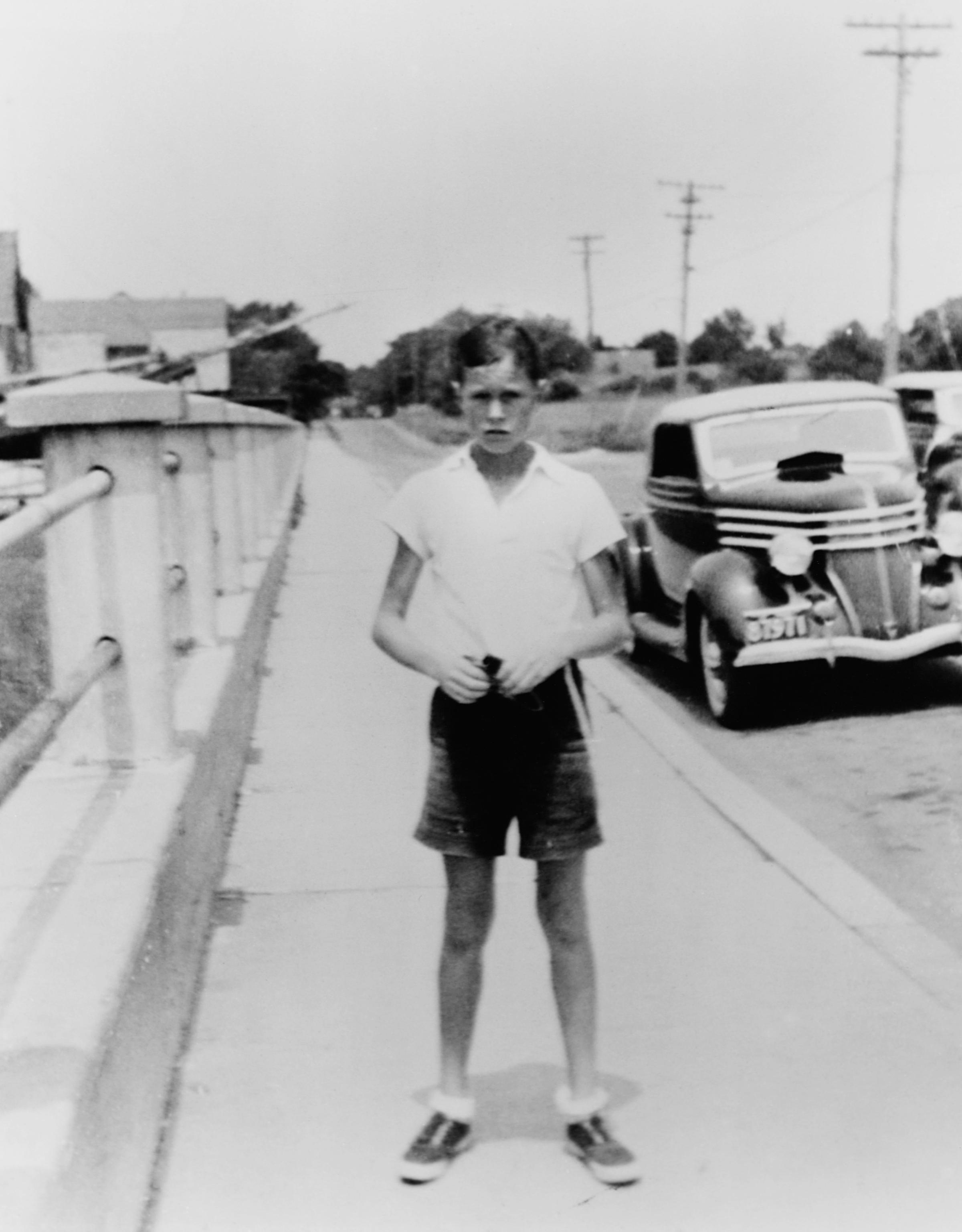








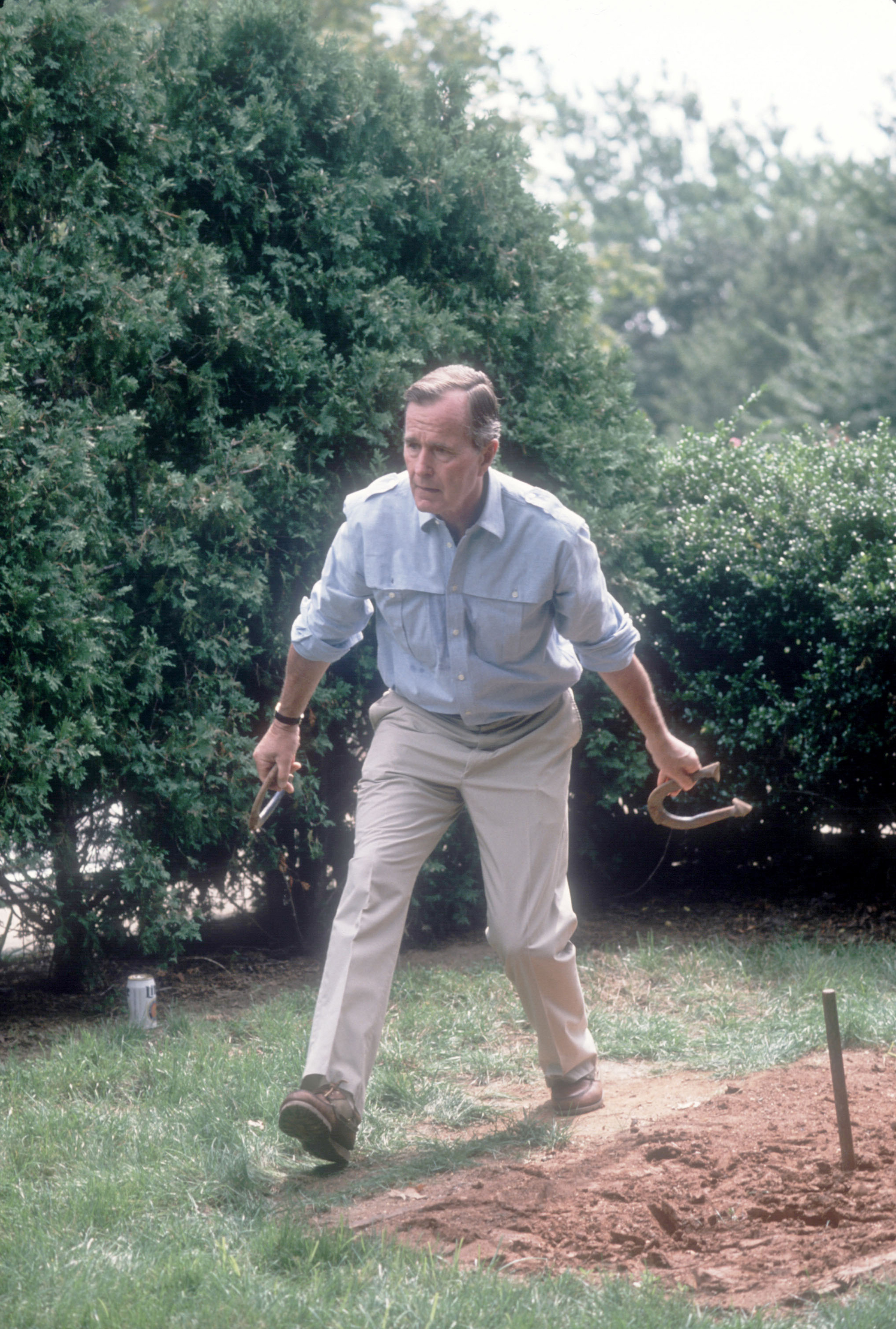
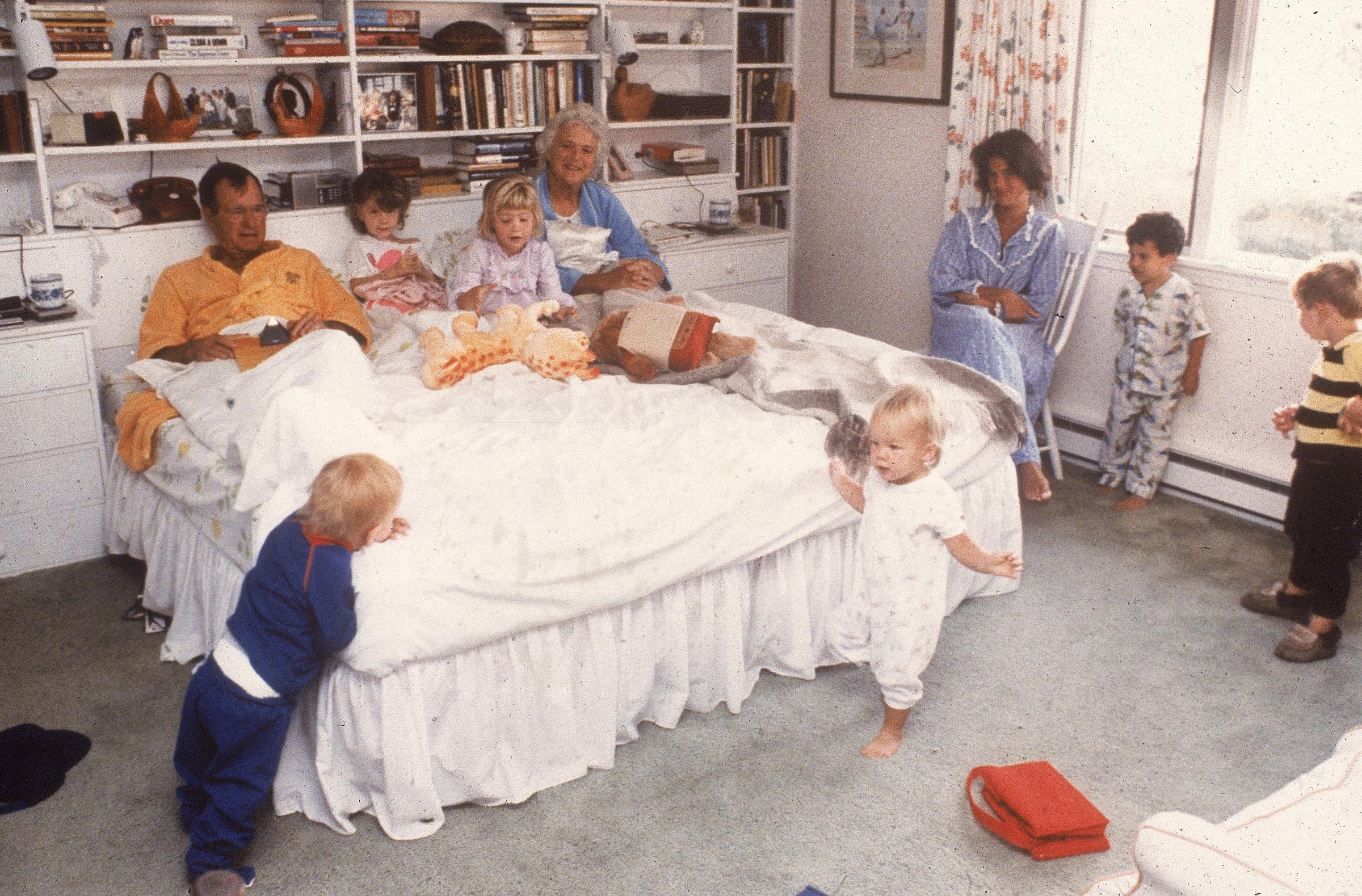
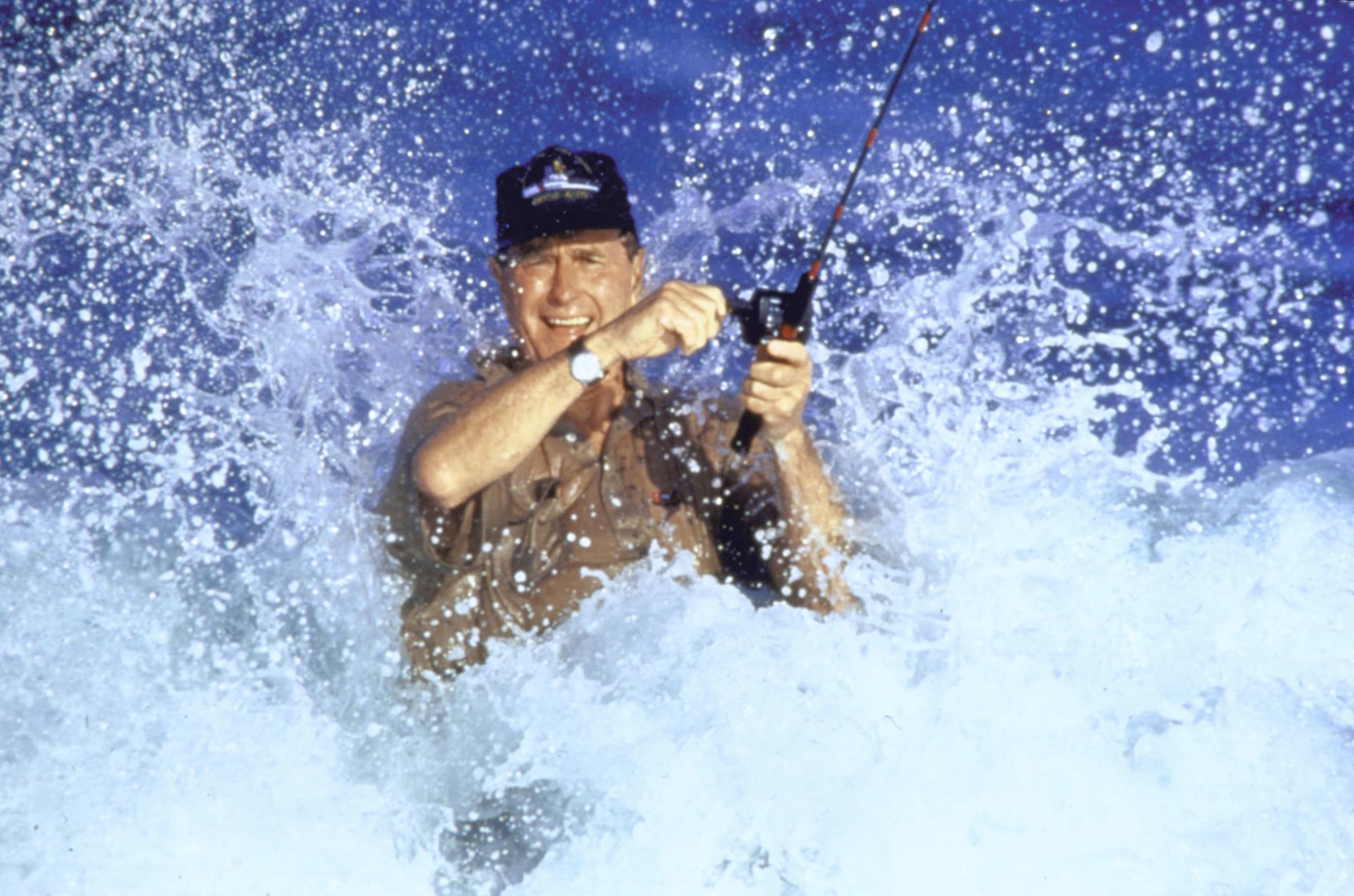
![George H. W. Bush;William III Farish;George H. W. Bush [Clothing] George H.W. Bush dressed in hunting gear with friend & oil heir William Farish on a quail hunt at Lazy F Ranch on January 1, 1989.](https://api.time.com/wp-content/uploads/2014/06/bush_birthday15.jpg?quality=75&w=2400)
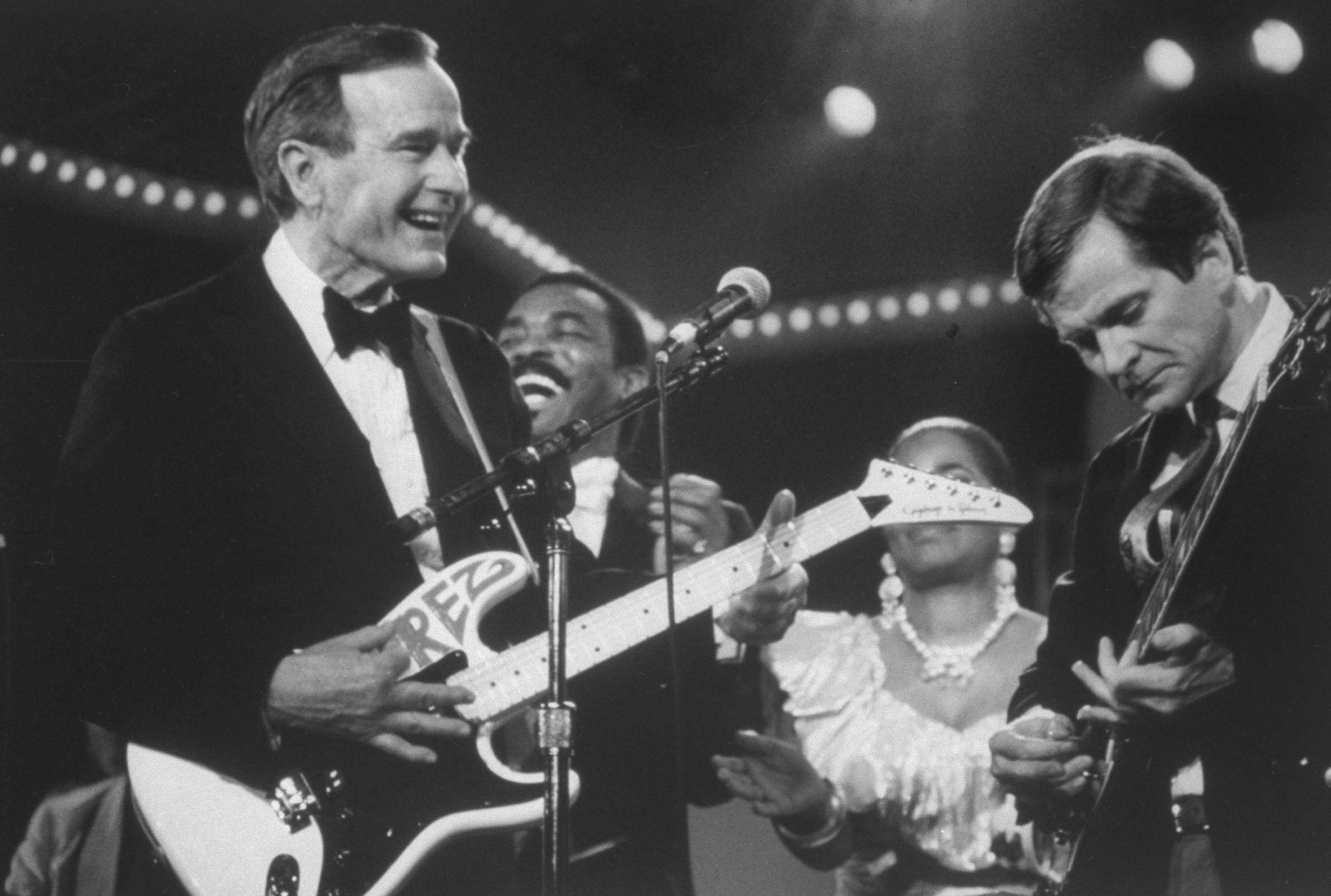
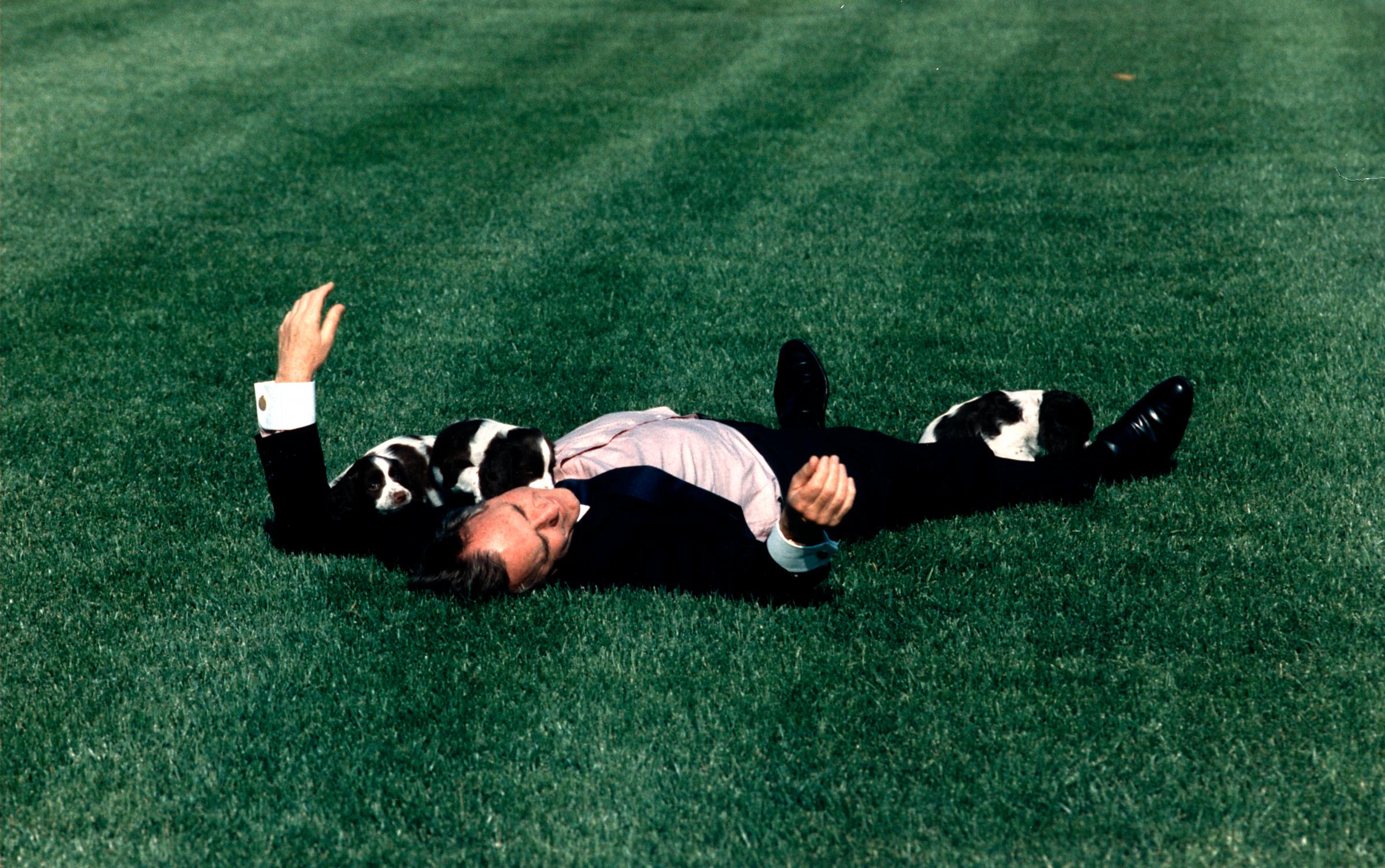
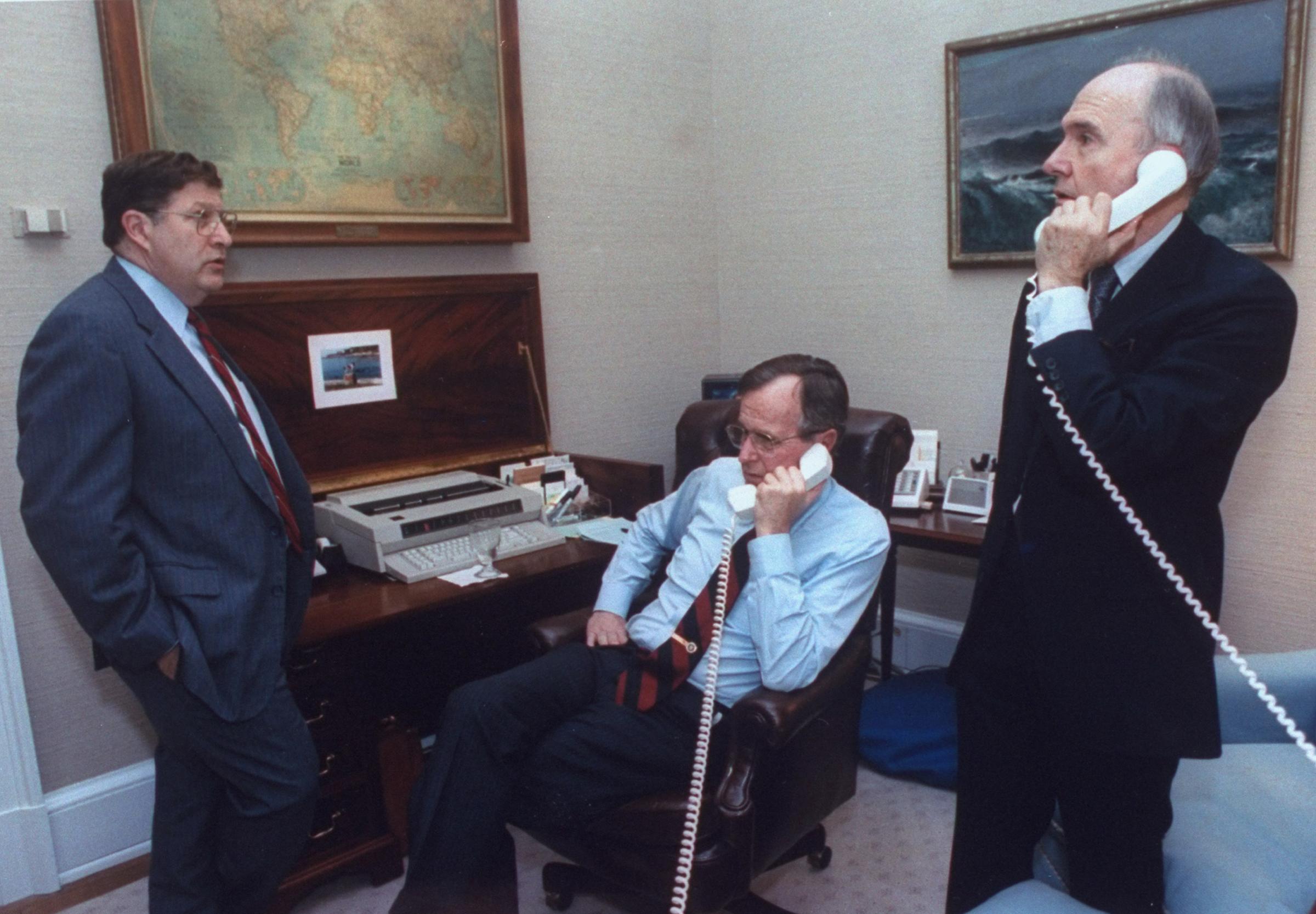
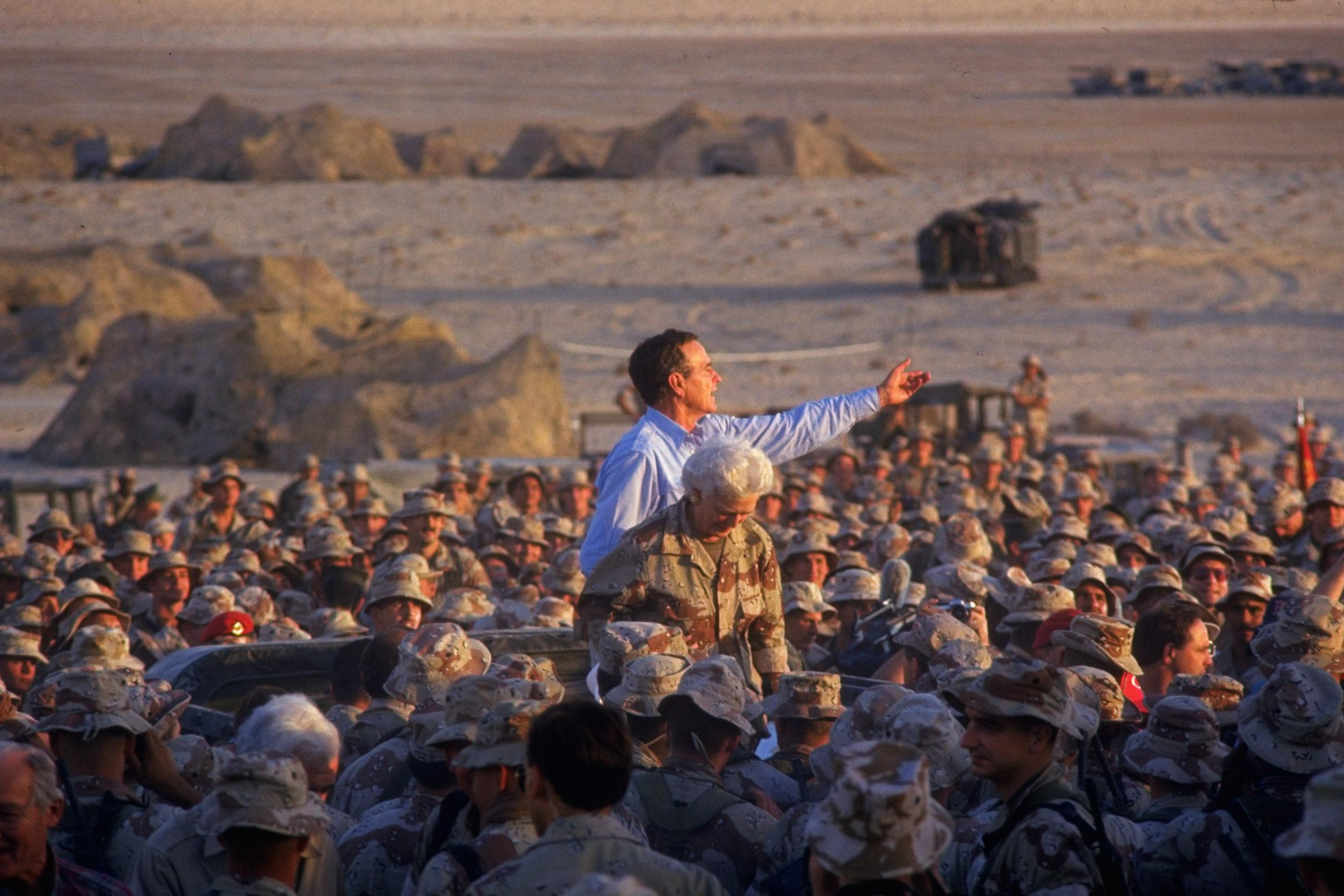
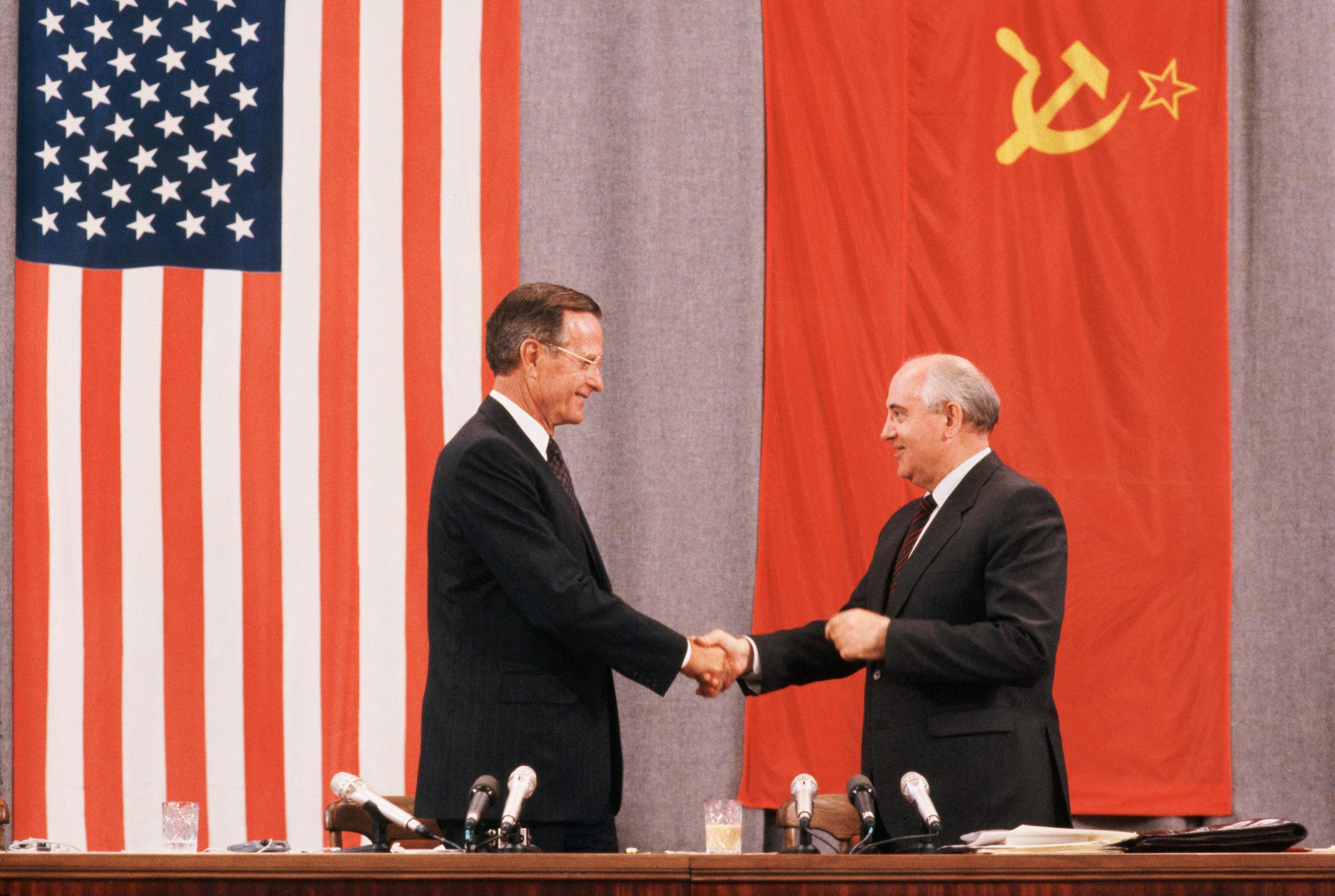






But the challenge from the left and broader uncertainty about conservative values in a world without the Soviet Union made Bush’s right flank especially restive. Conservatives pleaded for activism and tax cuts while Bush’s own advisers cautioned against action of any kind that might make things worse. Bush sided with the latter, and by December he had a challenger in the New Hampshire primary in the form of former Nixon aide Patrick Buchanan. When the votes were counted in February, Bush won the contest, but Buchanan had taken 37% of the vote. Bush looked — and was — beatable.
Other factors contributed to his slow but steady downfall. Bush’s aides had come to view Vice President Dan Quayle as a drag on the ticket and maneuvered in secret to dump him. Callow and out of his depth as he may have been, Quayle nevertheless put an end to the putsch in August, but not before the conservatives heard about the attempted coup and had further doubts about Bush’s direction. Nothing, however, prepared Bush and his team for the challenge posed by a diminutive Texas industrialist named Ross Perot. He took aim at Bush early in 1992 for the sluggish economy and poured millions into a third-party campaign that seemed a personal vendetta against his fellow Texan. Perot picked up a lot of independent conservatives and even a few Democrats who were turned off by Clinton. In a two-man race, Perot could not harm someone of Bush’s stature; in a three-way race, he could kill him.
Which is pretty much what happened. The final results reached Bush in Houston, where his political career had begun nearly 30 years earlier. Clinton had won 43 percent, Bush 38 and Perot 19. His diary that night, noting that many pundits and pollsters predicted he would lose, told the story:
“I don’t like to see all of those who have written me off right. I was absolutely convinced we would prove them wrong but I was wrong and they were right and that hurts a lot. … Now into bed, prepared to face tomorrow: be strong, be kind, be generous of spirit, be understanding and let people know how grateful you are. Don’t get even. Comfort the ones I’ve hurt and let down. Say your prayers and ask for God’s understanding and strength. Finish with a smile and some gusto and do what’s right and finish strong.”
Correction Dec. 5
The original version of this story misstated when Saddam Hussein’s army invaded Kuwait. It was Aug. 2, 1990; not Aug. 2, 1991.
More Must-Reads from TIME
- Donald Trump Is TIME's 2024 Person of the Year
- Why We Chose Trump as Person of the Year
- Is Intermittent Fasting Good or Bad for You?
- The 100 Must-Read Books of 2024
- The 20 Best Christmas TV Episodes
- Column: If Optimism Feels Ridiculous Now, Try Hope
- The Future of Climate Action Is Trade Policy
- Merle Bombardieri Is Helping People Make the Baby Decision
Contact us at letters@time.com